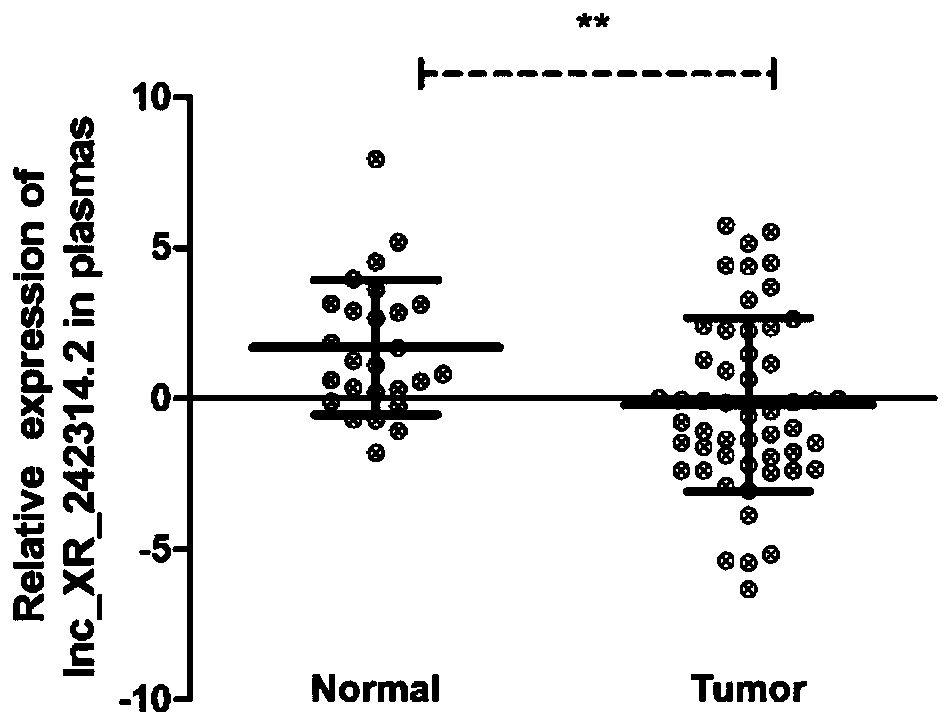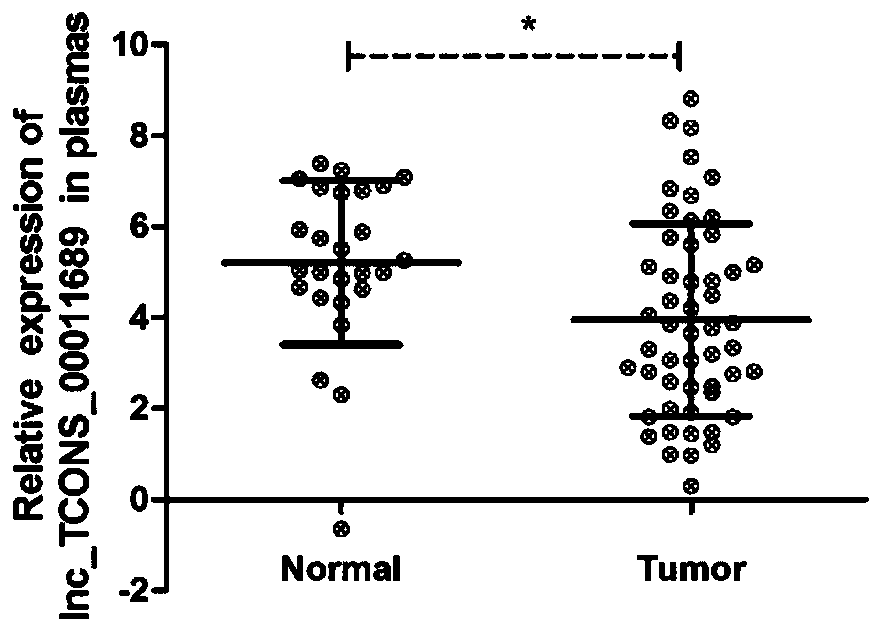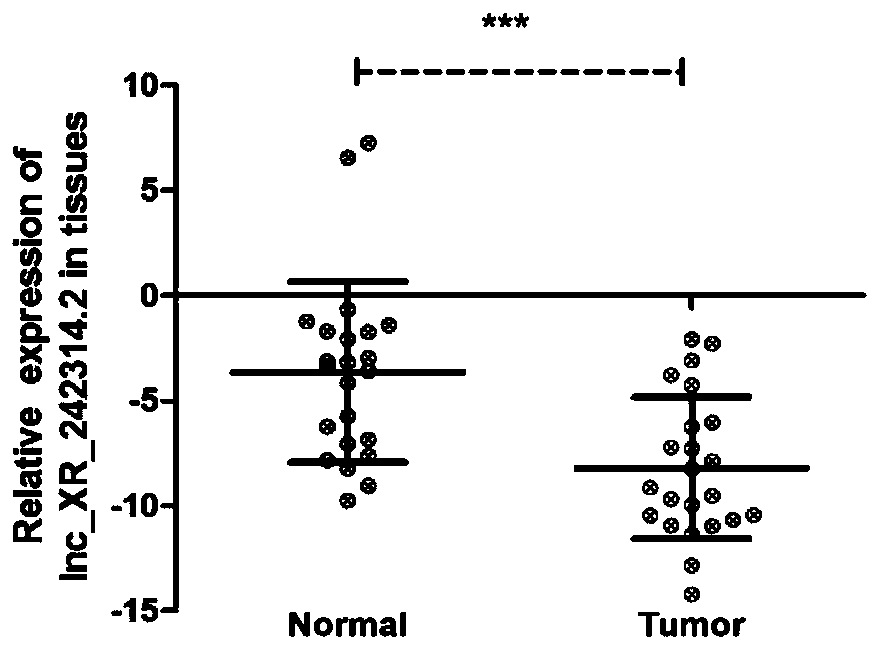Application of two long-chain non-coding RNAs in blood for combined diagnosis of esophageal squamous cell carcinoma
A long-chain non-coding, cellular cancer technology, applied in the field of joint diagnosis of esophageal squamous cell carcinoma with two long-chain non-coding RNAs in the blood, to achieve good diagnostic results, reduce patient pain, and save medical resources
- Summary
- Abstract
- Description
- Claims
- Application Information
AI Technical Summary
Problems solved by technology
Method used
Image
Examples
Embodiment Construction
[0027] The present invention will be further explained below in conjunction with the accompanying drawings and specific embodiments. It should be understood that the following specific embodiments are only used to illustrate the present invention and are not intended to limit the scope of the present invention.
[0028] Such as Figure 1 to Figure 7 As shown, the present invention discloses the application of two long-chain non-coding RNAs in the combined diagnosis of esophageal squamous cell carcinoma. The nucleotide sequence of the lnc_XR_242314.2 molecular marker is SEQ ID NO.1, and the nucleotide sequence of the lnc_TCONS_00011689 molecular marker The nucleotide sequence is SEQ ID NO.2.
[0029] 1. Research materials
[0030] 1.1 Subjects of the experiment.
[0031] This study is based on the Department of Oncology, Nanjing Hospital Affiliated to Nanjing Medical University. The Department of Oncology treats patients with esophageal squamous cell carcinoma all the year ro...
PUM
 Login to View More
Login to View More Abstract
Description
Claims
Application Information
 Login to View More
Login to View More - R&D
- Intellectual Property
- Life Sciences
- Materials
- Tech Scout
- Unparalleled Data Quality
- Higher Quality Content
- 60% Fewer Hallucinations
Browse by: Latest US Patents, China's latest patents, Technical Efficacy Thesaurus, Application Domain, Technology Topic, Popular Technical Reports.
© 2025 PatSnap. All rights reserved.Legal|Privacy policy|Modern Slavery Act Transparency Statement|Sitemap|About US| Contact US: help@patsnap.com



